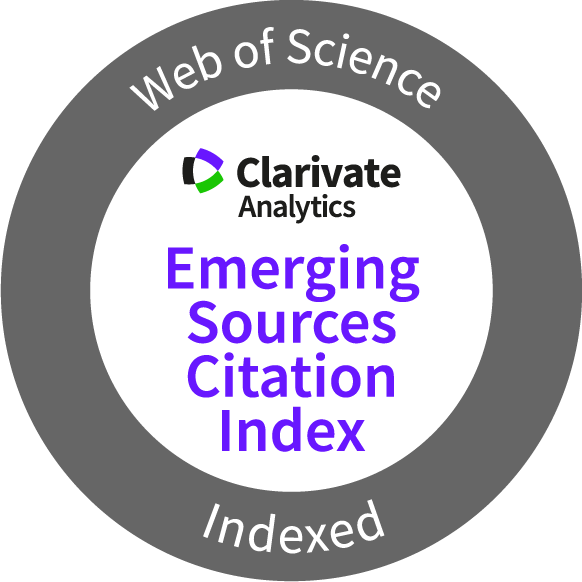Relationship between BMI and Urine pH in Nephrolithiasis Cases in Indonesia
Abstract
In nephrolithiasis/urolithiasis, urine pH is thought to modulate kidney stone formation at various stages, including crystallization, growth, aggregation, and retention. Moreover, numerous studies have demonstrated that an increase in Body Mass Index (BMI) correlates with a decrease in urine pH. This study aimed to determine the relationship between BMI and urine pH in cases of nephrolithiasis at Dr. Hasan Sadikin General Hospital Bandung. This was analytical observational study with a cross-sectional design, followed by correlation analysis is carried out. A total of 100 patients from January 2021 to December 2022 have met the inclusion criteria. From the results of the analysis, it was discovered that of the 21 patients with acidic urine pH, 42.11% had normal BMI, 26.32% were grade 1 obese, 15.79% were grade 2 obese, 10.53% were overweight, and 5.26% were underweight. The majority of patients who had normal urine pH also had a normal BMI (34.18%), followed by 30.38% with grade 1 obesity, 21.52% with grade 1 obesity, and 13.92% with grade 2 obesity. Of the 2 patients with alkaline urine pH, one person had a normal BMI and another had an overweight BMI. The results of the chi-square test presented a p value of >0.05, thus no significant relationship is observed between urine pH and BMI in nephrolithiasis patients.
Keywords
Full Text:
PDFReferences
- Ide H, Kikuchi E, Hagiwara M, Hayakawa N, Hongo H, Miyajima A, et al. Urinary pH levels are strongly associated with bladder recurrence after nephroureterectomy in upper tract urothelial carcinoma patients with a smoking history. Annals of surgical oncology. 2016;23:1029–38.
- Cho YH, Lee SY, Jeong DW, Choi EJ, Nam KJ, Kim YJ, et al. The association between a low urine pH and the components of metabolic syndrome in the Korean population: Findings based on the 2010 Korea National health and nutrition examination survey. Journal of research in medical sciences: The Official Journal of Isfahan University of Medical Sciences. 2014;19(7):599.
- Han H, Segal AM, Seifter JL, Dwyer JT. Nutritional management of kidney stones (nephrolithiasis). Clinical nutrition research. 2015;4(3):137–52.
- Murphy MO, Erpelding SG, Chishti AS, Dugan A, Ziada A, Kiessling SG. Influence of BMI in nephrolithiasis in an Appalachian pediatric population: A single-center experience. J Pediatr Urol. 2018;14(4):330.e1-330.e8. doi:10.1016/j.jpurol.2018.03.024
- Wang Q, Hu W, Lu Y, Hu H, Zhang J, Wang S. The impact of body mass index on quantitative 24-h urine chemistries in stone forming patients: a systematic review and meta-analysis. Urolithiasis. 2018;46(6):523–33. doi:10.1007/s00240-018-1044-z
- Wong YV, Cook P, Somani BK. The association of metabolic syndrome and urolithiasis. Int J Endocrinol. 2015;2015:570674. doi:10.1155/2015/570674
- Shavit L, Ferraro PM, Johri N, et al. Effect of being overweight on urinary metabolic risk factors for kidney stone formation. Nephrol Dial Transplant. 2015;30(4):607–13. doi:10.1093/ndt/gfu350
- Yoshimura E, Sawada SS, Lee IM, et al. Body mass index and kidney stones: a cohort study of Japanese men. J Epidemiol. 2016;26(3):131–6. doi:10.2188/jea.JE20150049
- Xu LHR, Adams-Huet B, Poindexter JR, Maalouf NM, Moe OW, Sakhaee K. Temporal changes in kidney stone composition and in risk factors predisposing to stone formation. J Urol. 2017;197(6):1465–71. doi:10.1016/j.juro.2017.01.057
- Spivacow FR, Del Valle EE, Lores E, Rey PG. Kidney stones: Composition, frequency and relation to metabolic diagnosis. Litiasis renal: composición, frecuencia y su relación con diagnósticos metabólicos. Medicina (B Aires). 2016;76(6):343–8.
- Fluck EC, Yazici AT, Rohacs T, Moiseenkova-Bell VY. Structural basis of TRPV5 regulation by physiological and pathophysiological modulators. Cell Rep. 2022;39(4):110737. doi:10.1016/j.celrep.2022.110737
- Hering-Smith KS, Hamm LL. Acidosis and citrate: provocative interactions. Ann Transl Med. 2018;6(18):374. doi:10.21037/atm.2018.07.37
- Wong YV, Cook P, Somani BK. The association of metabolic syndrome and urolithiasis. Int J Endocrinol. 2015;2015:570674. doi:10.1155/2015/570674
- Carvalho M. Urinary pH in calcium oxalate stone formers: does it matter?. Brazilian J Nephrol. 2018;40(1):6–7.
- Watanabe T. Improving outcomes for patients with distal renal tubular acidosis: recent advances and challenges ahead. Pediatric Health Med Ther. 2018;9:181–90. Published 2018 Dec 12. doi:10.2147/PHMT.S174459
- Abou-Elela A. Epidemiology, pathophysiology, and management of uric acid urolithiasis: A narrative review. J Adv Res. 2017;8(5):513–27. doi:10.1016/j.jare.2017.04.005
- Song L, Maalouf NM. Nephrolithiasis. Endotext [Internet]. March 9, 2020. Accessed February 22, 2024. Available from: https://www.ncbi.nlm.nih.gov/books/NBK279069/.
- Spatola L, Ferraro PM, Gambaro G, Badalamenti S, Dauriz M. Metabolic syndrome and uric acid nephrolithiasis: insulin resistance in focus. Metabolism. 2018;83:225–33. doi:10.1016/j.metabol. 2018.02.008
- Yan L, Shen Z, Lu Z. Increases in the expression of Na+ /H+ exchanger 1 and 3 are associated with insulin signalling in the ruminal epithelium. J Anim Physiol Anim Nutr (Berl). 2018;102(2):e569–e577. doi:10.1111/jpn.12798
- Sakhaee K. Epidemiology and clinical pathophysiology of uric acid kidney stones. J Nephrol. 2014;27(3):241–5. doi:10.1007/s40620-013-0034-z
DOI: https://doi.org/10.15395/mkb.v56.3755
Article Metrics
Abstract view : 601 timesPDF - 225 times

This work is licensed under a Creative Commons Attribution-NonCommercial 4.0 International License.

MKB is licensed under a Creative Commons Attribution-NonCommercial 4.0 International License
View My Stats






